Summer 2015 Law Library Reading List

There's something for everyone on the Law Library's Summer 2015 Reading List, and according to Pippin some of the books are quite tasty as well.
Thanks to all our contributors, big and small.
Enjoy!
The UC Berkeley School of Law Library
- An Unnecessary Woman, by Rabih Alameddine
- Ape House, by Sara Gruen
- A Spy Among Friends: Kim Philby's Great Betrayal, by Ben Macintyre
- Becoming a Supple Leopard: The Ultimate Guide to Resolving Pain, Preventing Injury, and Optimizing Athletic Performance, by Kelly Starrett
- Big Nate Lives it Up, by Lincoln Pierce
- The Buried Giant, by Kazuo Ishiguro
- Chasing Lost Time: the Life of C. K. Scott Moncrieff: Soldier, Spy, and Translator, by Jean Findlay
- The Girl on the Train, by Paula Hawkins
- Homicide: A Year on the Killing Streets, by David Simon
- How to Catch a Frog And other stories of family, love, dysfunction, survival, and DIY, by Heather Ross
- It’s What I Do, a Photographer’s Life of Love and War, by Lynsey Addario
- The Last Kashmiri Rose, by Barbara Cleverly
- The Lewis Trilogy: The Blackhouse, The Lewis Man and The Chessmen, by Peter May
- The Little Stranger, by Sarah Waters
- Lucky Strike, by Bobby Pyron
- My Brilliant Friend, by Elena Ferrante
- The One and Only Ivan, by Katherine Applegate
- Quick Question: New Poems, by John Ashbery
- Rabid: A Cultural History of the World's Most Diabolical Virus, by Bill Wasik, Monica Murphy
- The Regency Novels, by Georgette Heyer
- Sister Magic Violet Makes a Splash, by Anne Mazer, illustrated by Bill Brown
- Station Eleven, by Emily St. John Mandel
- Welcome to Braggsville, by T. Geronimo Johnson
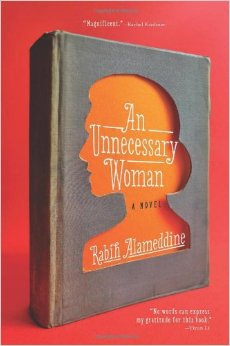
An Unnecessary Woman
by Rabih Alameddine
Robert C. Berring, Jr.Walter Perry Johnson Professor of Law
This lushly written book reminded me of The Elegance of the Hedgehog. It is the story of an older woman who has lived her life in Beirut. She is a virtual recluse, devoted to her enterprise of each year translating a world literary classic into Arabic. The book is festooned with literary references. This woman is deeply learned. She is also a survivor of the years unending violence in Beirut; Indeed the book is a history of the conflicts there as seen by a single, indomitable personality. One might complain that there is very little action, or be overwhelmed by how much action that there is. No matter, it is the voice of the first person narration that arrests one. The prose is beautiful and one comes to appreciate this most unlikely heroine. This book is not to be missed by lovers of powerful prose.
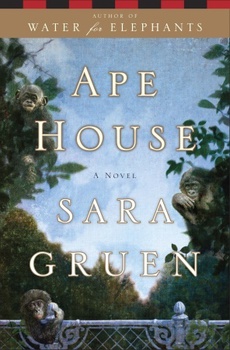
Ape House
by Sara Gruen
Ramona MartinezBoalt Express
Ape House by Sara Gruen is a good summer read. It is NOT a scholarly work so don’t expect it to be one. It touches on some scholarly subjects and scratches the surface of some deep questions but do not make the mistake of expecting an in-depth treatment, i.e., do not be this New York Times reviewer1. Rather, if you’d like something to read on a plane or by the pool this is it. The story centers around a group of six bonobos and the scientist who works with them. Are lab animals a lightning rod for protest? Yes. Where can that lead? Will people get hurt? How will the media portray the situation? What is the state of the media these days? Can an ethical journalist make a living anymore? Would a group of six bonobos make good reality TV characters? Would people watch that show? Would it make any money? Would it invite lawsuits? Would an ape’s testimony be admissible in court? If not, would an ape’s testimony influence a criminal investigation? So many questions! This novel goes down all those paths and more. It’s a bit all over the place but it will certainly start some conversations and/or spark some summer reveries.
If you would like to know more about the author and her other work, have a look at her website. http://saragruen.com/ I loved the design and all the little Easter eggs and sound effects on the home page. Again, not a dry, serious site. Just lots of fun.
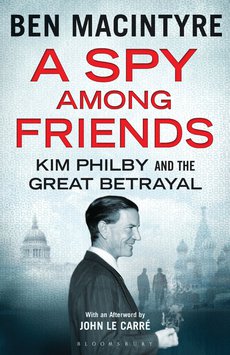
A Spy Among Friends: Kim Philby's Great Betrayal
by Ben Macintyre
Michael LevyAssociate Director, Law Library; Lecturer in Residence
For most people of a certain age in Britain the names Philby, Burgess, Maclean and Blunt just roll off the tongue. These four pillars of the British establishment, all educated at Cambridge in the 1930s, were the most notorious Soviet spies of the Cold War era. Harold "Kim" Philby was the most active of these spies until his ultimate defection to Moscow in 1963. There have been numerous biographies of Philby and his fellow spies, and the events surrounding their activities, as well as fictional accounts, the most famous being Tinker Tailor Soldier Spy.
Macintrye's recounting of Philby's career focuses not just on his treachery towards his country but the betrayal of one of his closest friends, Nicholas Elliott. Elliot himself was a high ranking member of M16, the foreign intelligence services, and had not only worked with Philby but viewed him as a close family friend. Macintrye has access to recently declassified papers that allow him to flesh out in greater detail how Philby operated and was able to avoid detection for 30 years. The denouement of the book is the recreation, from taped transcripts, of Philby and Elliot's last conversations in Beirut days before his defection to the Soviet Union. This is a fast-paced and fascinating story well worth reading even if you are already familiar this chapter of the Cold War.
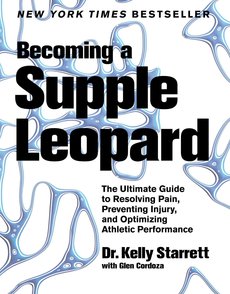
Becoming a Supple Leopard: The Ultimate Guide to Resolving Pain, Preventing Injury, and Optimizing Athletic Performance
by Kelly Starrett
Joe CeraLegal Research Librarian for Information Technology & Scholarly Communications
When I think about being a leopard, I always think that I'd prefer to be a supple leopard. It would be hard work pulling a carcass into a tree if I was a stiff and inflexible leopard. Proper movement is an important aspect of everyday life. It's important when you are picking things up, standing up, sitting down, chasing things, and participating in other everyday activities. This book is a textbook for movement but not the boring kind - it has pictures.
If you go to the gym you have probably seen hundreds of people attempt the most common exercises in different ways. You are probably in one of two camps in this situation, either you believe your way is the right way (otherwise you'd be doing it differently) or you aren't sure which way is the right way so you try to copy another person's form because they look confident. If you are in the latter camp, you need to take a look at this book to make sure you are doing it right. You should have the confidence to know that almost no one really knows what they are doing at the gym. If you are in the former camp, you should take a look at this book to remind yourself about all the little things that you probably aren't doing to maintain optimum form. Good form prevents injury, targets muscles better, and builds confidence.
Maybe you are not a gym person. Do you ever pick things up, stand up from a sitting position, or walk up stairs? Wouldn't it be embarrassing to realize that you hurt your knees because you are bad at getting out of a chair or walking up stairs? It would be embarrassing. Do you want to be that person in the cautionary tale who threw out his or her back picking up a loaf of bread? You don't ever want to be a person in any cautionary tale. This book has a lot of pictures from multiple angles so you can understand how to move better. The explanations are understandable and the various movements build on each other so you can start with an easier movement when you are facing a challenging move. Best of all, it is incredibly affordable and you can easily own your very own copy.
2nd edition available in May 2015
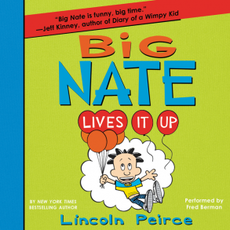
Big Nate Lives it Up
by Lincoln Pierce
Isaac Klein5th Grade, Fairmont Elementary School
Big Nate Lives It Up is the title of my book for my book review. Its author and illustrator is Lincoln Pierce. It is the 7th book in the Big Nate series. The main character is Nate Wright. Nate likes comic books and sports. He is sometimes cheerful but gets angry easily. Other important characters are Teddy, Francis, and Ms. Godfrey. In this book Nate has to show around a new kid at school named Breckenridge Puffington III. He likes flowers and then he finds a famous mural in the school and gets famous. The cartoons are written by Big Nate and are very humorous and catch your eye. I would recommend it to 7-12 because it would be bad for little kids and too immature for 13+.
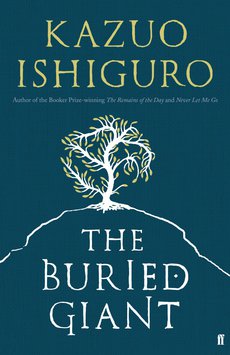
The Buried Giant
by Kazuo Ishiguro
Kathryn Ferrier
Told with the sensibility of a post-Arthurian fable, The Buried Giant begins with an elderly couple. Early on in the book, they decide to make the journey to reunite with their grown son who lives in another village. Where that is, they can’t quite remember, which, by the way, is one of the themes in the story. The narrative has a very dream-like quality to it; you can easily imagine that you are listening to a storyteller unfold an ancient legend, passed down through time. Although intentionally slow moving, the intrigue is maintained nonetheless, and you simply want to find out what happens next at each step of their journey. Other characters that the couple connects with on their way are a warrior, a young boy, and an aging knight. And then there is the issue with the boatman...
Kazuo Ishiguro is well known for his beautiful prose and his exploration of off-beat, sometimes very off-beat subject matter. The Buried Giant is a multilayered tale that touches on many aspects of what it means to be human, and perhaps what requires the most courage – the ability to let go.
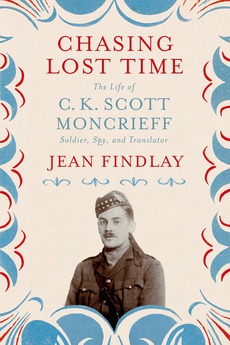
Chasing Lost Time: the Life of C. K. Scott Moncrieff: Soldier, Spy, and Translator
by Jean Findlay
William BenemannLibrary Archivist
Best known as the translator of Proust, Charles Scott Moncrieff lived a life very different from the hothouse aesthete with whom he has become inextricably linked. Findley's mother was Scott Moncrieff's great niece, and so this biography draws heavily on family archives and reminiscences. Though Scott Moncrieff was, as one Scottish relative described him sadly, "a chomosecshooal" the family always assumed that he had lived a lonely and celibate life. It was only after completing the first draft of this biography that Findley uncovered 458 pages of letters from Scott Moncrieff to Vyvyan Holland (Oscar Wilde's son), and realized that her great uncle had, though in the closet to his family, led an extremely rambunctious gay life. Findley rewrote the biography inserting this new information — and therein lies the problem. She does not have a basic grasp of gay culture; for example, she is particularly tone deaf to the phenomenon of camp. This biography raises a fascinating question about the limits of biographers. Can a Muslim write an insightful biography of a Jew? Can a white man ever truly understand the life experiences of an African American woman?

The Girl on the Train
by Paula Hawkins
Marci HoffmanAssociate Director & International and Foreign Law Collections
This is a wonderful book to sink into and forget all matters in the real world. It’s a great mystery revolving around the lives of three women (and narrated by these same women). I don’t want to give too much away, but the story involves voyeurism, murder, broken marriages, infidelity, secrets, lies, alcoholic blackouts, and much more. Rachel, one of the main characters, rides the train into London to work. Each day, she passes her old house which is now occupied by her ex-husband and his new wife (and baby). The new wife is Anna and she’s one of the major characters and narrators. While on the train, Rachel also passes by a young couple who live near Anna. Rachel becomes obsessed with these two and creates names and an entire life for the couple. When the woman in this couple (Megan) goes missing, well, the games begin. The author tells the story in a diary-like manner and weaves together the lives of the three women through their narration. The story is rich with interesting twists and tidbits and sometimes you aren’t sure what is real and what is being made to seem real by some of the characters. Frankly, you probably won’t like any of the characters – not the women, men, cops, neighbors, etc. You will, however, enjoy the story.
This book reminds me of a couple of my favorite movie mysteries – Gaslight (I prefer the 1944 version of this movie, directed by George Cukor and starred Ingrid Bergman, Charles Boyer, Joseph Cotten, and introduced a very young Angela Lansbury) and Rear Window (a classic Hitchcock film with James Stewart and Grace Kelly). Start your summer with this terrific book and then watch a couple of good movies.
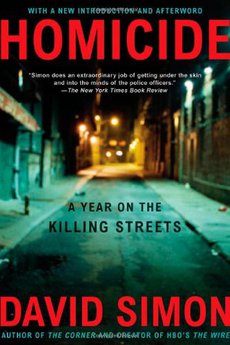
Homicide: A Year on the Killing Streets
by David Simon
Michael LevyAssociate Director, Law Library; Lecturer in Residence
David Simon is best known as the creator of The Wire. It has often been described as the best ever television show produced in this country. If you haven't experienced the complex and interconnected world of police, drug gangs and the ordinary citizens of Baltimore you can check out the DVD collection from the reserve collection in the law library. (The law library has a lot of other classic movies and TV series relating to law and justice on dvd –check em out!)
Back in the 1990s Simon was a police reporter for the Baltimore Sun. He took a leave from his beat to follow the homicide unit of the Baltimore Police Department for an entire year. The resulting book has become a classic of narrative non-fiction and was also adapted into a successful television series, Homicide: Life on the Street The book covers the mundane operations of the homicide unit, mixed with the grim and sometimes horrific realities of their jobs. As Richard Powers says in his introduction “he [Simon] hammers home the fact that there's very little Black and White out there, and a hell of a lot of Gray."
Despite running close to 700 pages, this is a fascinating and immersive reading experience.
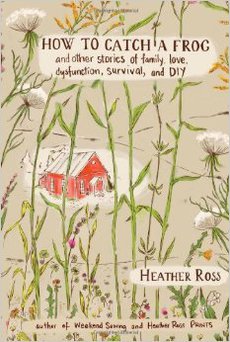
How to Catch a Frog And other stories of family, love, dysfunction, survival, and DIY
by Heather Ross
Nancy DonovanFSU
I did not learn how to catch a frog, nor did I really want to, but I devoured Heather Ross’s tale of growing up poor and off the grid in a rural part of Vermont in the 1970s. Ross, now a successful author, fabric designer and illustrator of children’s books, is a storyteller with an open and wise heart. Her “how to” chapters include primers on “How to Make Coffee Logs to Start a Fire” (her childhood homes were often heated solely by wood burning fires) and “How to Make Sugar on Snow.” And what woman doesn’t want to learn “How to Not Turn Into Your Mother”?
Ross’s childhood privations make for good copy, and her early life was certainly unpleasant and difficult at times. When Ross complained to her mother about poverty and her scant exposure to basic life skills, her mother assures her that “Well, you should thank me, because you have a lot of good stories instead.” Ross does. Even if you aren’t interested in making a warm pair of pants, or broccoli soup, I recommend this book, with its stories about the loneliness of being a child, and the power of creativity, self-reliance and self-awareness as tools on the path to growing up whole.
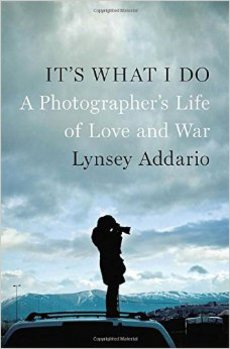
It’s What I Do, a Photographer’s Life of Love and War
by Lynsey Addario
Nancy DonovanFSU
Several years ago after seeing a picture of a horrible war scene on the front page of the New York Times my daughter asked: “Mom, why would somebody take a picture like that and not help?” I told Claire that by taking the picture, the photographer was helping. Now, after reading Lynsey Addario’s amazing book It’s What I Do, a Photographer’s Life of Love and War I have an understanding of how the art of wartime photography and journalism does help. Addario’s life work is depicting civilian and other casualties to show us the human costs of war.
Addario, an American photojournalist who has won the MacArthur Genius Grant and the Pulitzer Prize in International Reporting, was raised by hairdressers in New Jersey and discovered photography in her early teens. She made a conscious choice to avoid a quiet or predictable life, and instead went out into the world to make a name for herself as a photographer in war zones and other places of tragedy and human violence. She has photographed in Afghanistan, the Congo, Darfur and Iraq. She was kidnapped and has been nearly killed, and her book is riveting and educational, providing an insider’s view of many of the most violent and painful conflicts of our time.
This is Addario’s story of both love and war. Addario is now married with a young son, and she describes early love affairs and her struggles to balance her professional and personal lives. Not surprisingly, she has had to fight to be taken seriously by her male peers. Hers is a modern adventure story, and Lynsey Addario’s book will soon be made into a movie produced by Steven Spielberg and starring Jennifer Lawrence.
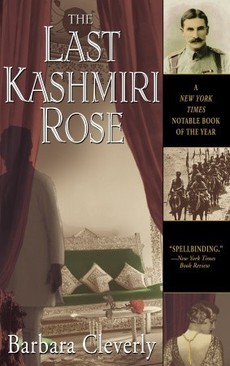
The Last Kashmiri Rose
by Barbara Cleverly
Edna LewisReference Librarian
I was at Pendragon Books on Solano a few months ago browsing their most excellent selection of recommended mysteries when I picked up The Last Kashmiri Rose, the first of the Joe Sandilands series by Barbara Cleverly. Sandilands is a Scotland Yard inspector who served on the Western Front in WWI and now, during the waning days of the British Raj, is in India training local police. In The Last Kashmiri Rose, it’s 1922, and Sandilands is sent from Calcutta to investigate the suspicious death of a British officer's wife while in her bath. Her death seems connected to the deaths of 4 other British officer's wives, all of whom died under suspicious circumstances over the past 12 years. Sandilands is eager to employ his recent training in psychological profiling, but he must also navigate the tricky politics of the British military as well as rising anti-British sentiment among the Indian population. The exotic locations captivate (subsequent books are set in the hill town of Simla and a maharajah's palace in Rajahstan). There are currently 12 books in the series (partway through the series Sandilands returns to England for more crime solving). So pour yourself a Pimm's cup, plunk yourself in a lawn chair, and join Joe in the Jewel in the Crown.
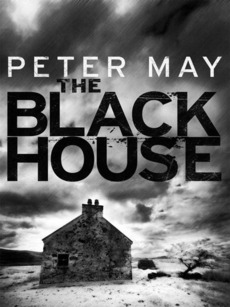
The Lewis Trilogy: The Blackhouse, The Lewis Man and The Chessmen
by Peter May
Edna LewisReference Librarian
Following the tragic death of his young son in a hit and run accident and the subsequent breakup of his marriage, Edinburg detective Fin Macleod returns to the Isle of Lewis in Scotland’s Outer Hebrides where he was raised and confronts a series of present day mysteries embedded in the island’s past. In The Blackhouse a brutal murder bears similarities to one in Edinburg. In The Lewis Man an unidentified corpse is recovered from a peat bog. And in the final installment, The Chessmen, a long missing plane with an unidentified body is discovered at the bottom of a loch. Finn had considered his escape from his uncaring upbringing on the island a lifesaver, and he struggles with the demons of his past as he works to solve each murder. As he reconnects with the friends of his youth and the island’s ancient customs and traditions, he finds that events long forgotten play a big part in solving the present day murders. The Isle of Lewis (no relation) is a godforsaken place and the brutal climate and remote location reflect Finn’s own isolation. As crime fiction goes, these stories are as gripping as they come - with tense and shocking conclusions.
May is best known for his Enzo Macleod series focusing on a Scottish detective solving mysteries in France. In returning to his Scottish roots, however, May has hit a triple home run (to mishmash sports analogies). The Blackhouse won the Barry Award but they are all page turners with complex mysteries, an incomparable setting and the spookiness of ancient traditions. Handy Gaelic glossary included.

The Little Stranger
by Sarah Waters
Kathryn Ferrier
Gothic, anyone? Normally, I avoid novels that take place in murky English great houses with dark corners and mysterious occurrences because I’m intensely averse to the creep factor. However, after having read a couple of Sarah Waters’ novels, I was drawn to The Little Stranger, knowing in advance about its supernatural thriller aspect. After a number of attempts (I can’t do this, I can do this, I can’t...), I plunged in. Waters’ exquisite storytelling hooked me and I, who run screaming from spiders and have never recovered from the original movie Psycho, couldn’t put this page-turner down; I was in, for better or worse.
The story is narrated in retrospect by a Dr. Faraday, who is quite familiar with the local Warwickshire manor house Hundreds Hall, having grown up in the district, and whose working class parents made every sacrifice to put him through medical school. In the years following WWII, a relationship develops between Dr. Faraday, now leaning toward middle age, and the family of Hundreds Hall, the Ayres, whose fortune is in severe decline. Because of their denial and failed efforts to maintain their house and entitled status, the Ayres family members are barely able to keep their heads above water, financially and emotionally. Dr. Faraday has a personal connection to the house (his mother was once a nursemaid there many years ago), and offers to help them through their various dilemmas, eventually becoming more than just a doctor on call. It is apparent from the start that he is enamored with the house itself, always has been, and sadly for him, the Ayres are not opposed to subtly letting him know every now and then that he is not of their class. Ironic, since he is the one trying to help them survive in a changed world, yet his esteem is deeply affected by their perceptions. The story’s pace is unhurried, suspense builds gradually, and details are vivid – a good read that will keep you guessing.
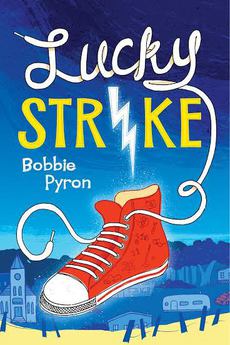
Lucky Strike
by Bobby Pyron
Jacob Klein5th Grade, Fairmont Elementary School
I am doing a book review on Lucky Strike by Bobby Pyron. The main characters are Nate and Gen, who are best friends. At school they are bullied. Nate is an unlucky kid who has never called a coin toss correctly. He lives with his grandpa. Gen is a smart kid who doesn’t believe in luck, but in science and odds and things like that. She has a large family and her dad is a preacher. On April 11, Nate’s eleventh birthday, while playing mini-golf, he gets struck by lightning right out of the clear, blue sky. All at once, his luck changes, as does his relationship with Gen.
I thought it was a very exciting book. I recommend this book to kids aged 8.5-12 years.
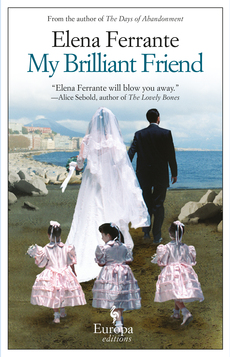
My Brilliant Friend
by Elena Ferrante
Chris TarrHead of Cataloging
Elena Ferrante is the mysterious Italian novelist – mysterious because no one is quite sure who she is (she has refused to do any publicity for her books, and no one is even sure what her name really is or even if she is a woman), and also because it is difficult to say exactly what her books are about. In The Days of Abandonment, a woman, abandoned by her husband, falls apart. In Troubling Love, a woman, Delia, learns that the drowned body of her mother has been found in the sea near a small Italian town, wearing only expensive lingerie. Delia attempts to understand why. In The Lost Daughter, a middle-aged woman, Leda, whose daughters are staying with her ex-husband in Canada, spends the summer on a beach near Naples, where she observes a woman who is married into a menacing Neapolitan family who are also summering there. Leda does something inexplicable. I’ve loved each of these books, although I can’t claim to understand them. Each of these plots sound like nothing, but in each case you are completely caught up in the mysterious stories of these women, women who, as Ferrante writes, “... are strong, educated, self-aware and aware of their rights, just, but at the same time subject to unexpected breakdowns, to subservience of every kind, to mean feelings. “
With My Brilliant Friend, though, you begin to actually understand the lives of these women. My Brilliant Friend is the first volume of a quartet of novels – the translation of the fourth is not yet published - about two friends growing up in poverty in 1950s Naples. Reading My Brilliant Friend, you begin to understand who Delia, Leda and Olga are, where they have come from and just how their worlds have come apart. As opposed to the earlier novels, where we see a grown woman in one slight crisis, here we follow two friends, the brightest students in their grade, as they grow up, go to school, get married and find careers. We come to understand their neighborhood, and what it means to leave – or not leave – that neighborhood behind. It’s worth reading for the picture it portrays of postwar Naples, but even more so for the light it sheds on what these friends, and women generally, pay for success regardless of which path they take.
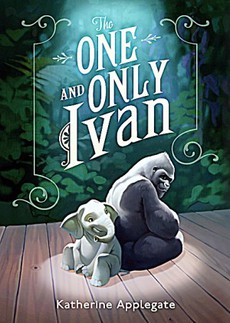
The One and Only Ivan
by Katherine Applegate
Natalia Levy3rd Grade, Peralta Elementary School
This book is about two elephants, Stella and Ruby, and a gorilla named Ivan. They live at the Big Top Mall in their own domain. Stella the big elephant dies and another named one Ruby comes and she makes friends with Ivan. The Big Top Mall closes down because it doesn't get enough money so Ivan and Ruby both go to the zoo. They both go to their own cages in the zoo but they are happy there.
I like this book because at the end they get to go to the zoo where Ivan and Ruby don't get hurt.
I think other people should read this book because whoever likes sad and happy ending stories then I bet you would like this story.

Quick Question: New Poems
by John Ashbery
Dean RowanDirector Reference and Research Services
Sublime, ridiculous, obscure, pop, profound, shallow, clever, cliché, surprising: John Ashbery’s latest volume of new poems—whoops, nope, I blinked and Breezeway has just appeared—will satisfy his fans and infuriate his detractors, and likely infuriate his fans, too, which is why we remain fans. As always, however, an Ashbery fan is really a fan of poetry, the stuff that marks time, sometimes rhymes, looks organized on the page, and speaks of climates, flowers, ball turret gunners, and nights before Christmas, among other topics you could look up on Google. A typical Ashbery poem reads like a limerick grafted upon an extended work by Coleridge interrupted by a dramatic monologue of Browning. Most feature Ashbery himself, an implied persona, and sundry other characters usually relegated to bland pronouns. I am ill-equipped to situate Quick Question among his other works, most of which I have read, in terms of relative quality, because the poet’s complexity does battle with his faux-complexity, and one is easily distracted by the compulsive sequence of words in spite of their ordinary or extraordinary meanings. The volume certainly is a happy assortment of dalliances with paradox (“Dry-eyed from weeping…”), pun (“It’s time for a little chamber music | of Arensky or Borodin, something minor | and enduring…”) and sonic effects (the title “Suburban Burma”). There is no dearth of one-liners. “A Voice from the Fireplace” opens with “Like a windup denture in a joke store | fate approaches, leans quietly. Let’s see…” Pretty sure I never read that in Dickinson or Dante. But from a distance poets like A.R. Ammons and Dickinson can appear to converge, and the same might be said of Ashbery and [your poet here]. Use your powers of inference to imagine Quick Question, which is what takes place between the opening line of the first poem, “Words to That Effect”—“The drive down was smooth”—and the closing sentence of the last poem, left untitled (or titled “[Untitled]”?)—“We needed that.”
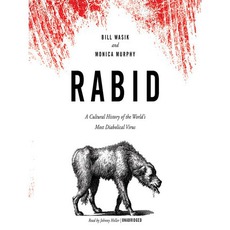
Rabid: A Cultural History of the World's Most Diabolical Virus
by Bill Wasik and Monica Murphy
Monique MacauleyAcquisitions
I will confess that since I was a young child I have been fascinated by the mythical deadly diseases of history. The Bubonic Plague, Small Pox, and Rabies. Well it was my lucky day when I ran across Bill Wasik’s and Monica Murphy’s book Rabid: A Cultural History of the World’s Most Diabolical Virus. It’s anything you wanted to know about rabies but were afraid to ask! Did you know that it is possible the vampire (and werewolf) myths may be the result of rabies outbreaks in the past? Do you know some of the more obscure symptoms of rabies infection? Have you ever wondered how Louis Pasteur managed to create an inoculation for the virus that has saved countless of lives? All of that is in there and much more besides. This is a disease that recognized no social class or boundary. All were susceptible. This is a book that makes you thank your lucky stars that you were born after the vaccine was invented otherwise little Fido may have been your undoing. The book is not carried in collection, however is easily obtained through public libraries or your local bookstore. Enjoy!

The Regency Romance Novels
by Georgette Heyer
Chris TarrHead of Cataloging
I blame it all on The Outlander. If you haven’t watched it on Starz you certainly should – here, this drinking game will help -- and of course the books are actually better, although there is a certain, uh, something about the TV version. This is the 1999 Salon article that convinced me I wasn’t crazy to be reading these books.
Anyway, after watching it, and then rereading some of the books, I was really at a loss for what to read next-- not ready for anything to substantive. Then, a friend of mine mentioned that during a bout of insomnia she was reading Georgette Heyer. Hmm, I thought.
Georgette Heyer is the romance writer credited with inventing the historical romance genre, in particular the Regency romance novel which by definition has to take place in England in the period between 1811-1820. Heyer, who died in 1974, wrote some enormous number of romances and thrillers, and was known for her historical accuracy. According to Wikipedia, she maintained an extensive library of reference works on things like the House of Lords, snuffboxes, signposts, costumes and vocabulary. Reading her books, you can tell that historical accuracy matters. Sometimes you can't make it to the bottom of the page for all the period jargon and furnishings blocking your way.
But she’s really good, and her books are like the Outlander in that there is a well-defined world (Gabaldon will describe which birds are rustling in the shrubbery; Heyer the exact sort of carriage being driven), and invariably a strong female character trying to make her way in an alien circumstances until she meets the male character who understands her. (She often knows a great deal about horses, if you care about that at all.) Complications ensue and all ends well. I’ve recently read Sylvester, or the Wicked Uncle, The Toll-Gate, The Reluctant Widow, and am now in the middle of False Colours (twins mistaken for each other!). My friend says you can read them for about two weeks, and I think she's right. I’ve about reached the end of my stay in Regency England, but it has been enjoyable. Load several on your Kindle and take them to the beach.
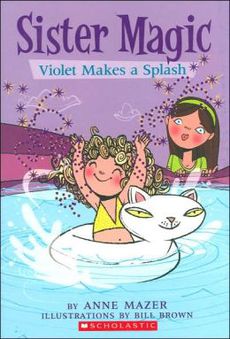
Sister Magic Violet Makes a Splash
by Anne Mazer, illustrated by Bill Brown
Leah Klein2nd grade, Fairmont Elementary School
The title of my book is Sister Magic Violet Makes a Splash. It is written by Anne Mazer and illustrated by Bill Brown. It is about two sisters named Mabel and Violet. Mabel is eight years old. She is totally organized and likes to be in charge and be helpful. Violet is five years old and wild. She also has magic and can fly. Mabel tries to keep Violet’s magic a secret so her mom and dad won’t know. In this book Violet creates four different pools in her backyard. The girls’ mom thinks the dad created the pools and the dad thinks the mom did. Another funny thing in the book is when Violet makes a pie with four and twenty blackbirds in it for a pie baking contest and the birds use their beaks to get out of the pie.
I like this book because I like the sisters and because surprising things happen. I also like the pictures. There are other books in the series and they are all fun.

Station Eleven
by Emily St. John Mandel
Robert C. Berring, Jr.Walter Perry Johnson Professor of Law
Everywhere I turn these days, fiction has a dystopian element. It is not just zombies that await us, all manner of worldwide disasters are on offer. The science fiction of my youth often described spectacular galactic empires and amazing inventions. In 2015 many novels are set in the ruins of a world without electricity or humanity. Station Eleven offers a different take. It is set twenty years post-disaster with flashbacks to the fatal plague that presage much of the action. This a book about the human spirit and about survival. It poses the question of art in the future world. A travelling band of actors and musicians travel in the wilds of Michigan, visiting hamlets of struggling survivors. A very special comic book pulls the story together. Life is harsh, people can be cruel, but the underlying sense is hope. The survival of Shakespeare, performed by motley troopers to adoring audiences is a tonic. The book even has a hopeful ending. This one is a treat.

Welcome to Braggsville
by T. Geronimo Johnson
Ellen GilmoreReference Librarian
T. Geronimo Johnson, who has taught writing at UC Berkeley, describes his new novel as a “dark comedy” about four undergraduates at Cal who learn that the idealism they developed in academia doesn’t necessarily apply in the real world. The students come from various parts of the country and from different racial and socioeconomic backgrounds. D’aron Davenport, the novel’s main character, is white. He grew up in Braggsville, a small town in Georgia full of friendly people who just happen to have black lawn jockeys in their yards and racist bumper stickers on their trucks. At Cal, D’aron befriends a gay African American former high school football player from Chicago, a Malaysian American man from the Richmond district in S.F. who aspires to be a comedian and a blonde woman from Iowa whose parents are professors and who claims to be part Native American. As sophomores the four sign up together for a class entitled “American History X, Y, and Z: Alternative Perspectives”. During a weekly informal discussion group that the professor calls “Salon de Chat”, the subject of Civil War reenactments comes up. D’aron casually mentions that his home town holds them every year during its Patriot Days festival celebrating the Confederacy. His three friends are shocked and decide that they and D’aron should head to Braggsville for the festival and put on a “performative intervention”, where they will stage a pretend lynching and then interview the town’s citizens about their feelings toward this reminder of the horrors of slavery. “Today’s change agents perform instead of picket”, one friend explains. The intervention goes terribly wrong, and the author uses all sorts of voices and narrative techniques to satirize identity politics, white racial anxiety, and liberalism’s self-righteousness. The University’s answer to the ensuing frenzy is a colloquium called “The Body Linguistic: Syntax, Sexicons, and Civil Rights.” As one book critic puts it, Johnson “plays cultural criticism like it’s acid jazz. His shockingly funny story pricks every nerve of the American body politic...As we feign surprise at police brutality and our Twitter outrage flits from Ferguson to Staten Island to Cleveland, this is just the discomfiting book we need.”
